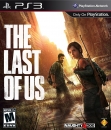How Avowed Lets You Choose Your Own Adventure with Incredible Freedom
“Your worlds, your way” is not just a motto for Obsidian – it’s truly how they think about their players. Freedom lives within everything they do, informing how they design quests, regions, combat, and more — it’s these elements that help make an “Obsidian RPG” great (and why “Obsidian RPG” is a term you can immediately recognize in the first place).
Ahead of the Avowed launch on February 18, 2025, I spoke with the team behind the upcoming fantasy role-playing game to learn more about the process that offers players such a huge level of agency — and how this philosophy is being pushed in this game more than ever.
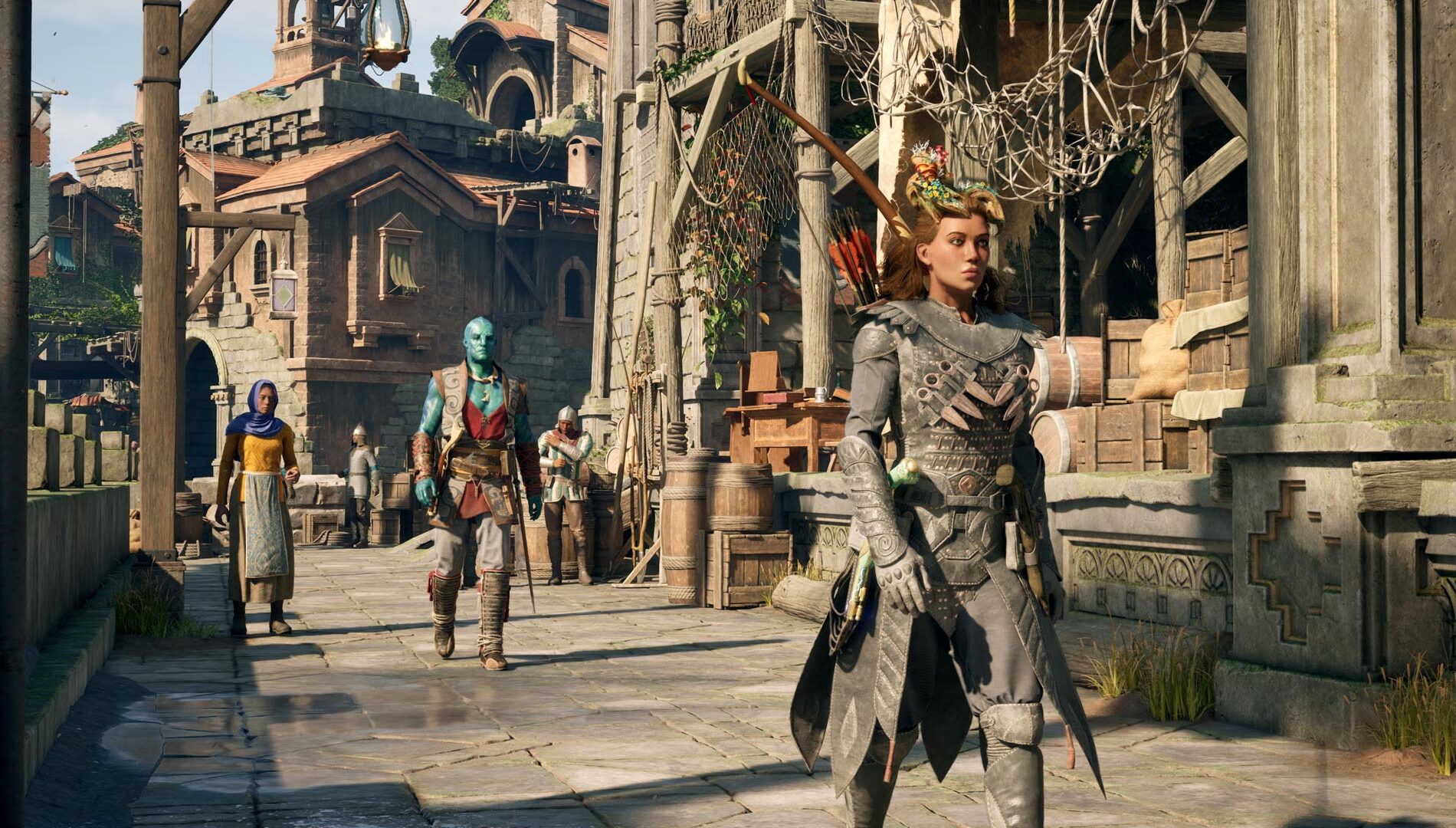
“There are choices you can make and consequences of actions you can take or not take, whether they are forecasted to you or not, that will impact the future of entire settlements, individual people, groups of people — the whole spectrum basically,” says Region Director Berto Ritger.
This felt evident as soon as I got off the boat in the game’s first region, Dawnshore, as the entire zone is essentially laid out in front of you, waiting to be explored. Everywhere I looked was an opportunity to engage with this world, either through circumnavigating old houses to find loot, or talking to locals that would yield side quests — and this was all before I even stepped foot outside of the port city of Paradis.
One of those quests involved a group of xaurips forcing a local settler out of her home. This quest alone has a variety of outcomes: you could go straightforward and fight the xaurips in her home or play it more stealthily and scout the location to report back on what you discover. But, as with many Obsidian-designed quests, there’s a bit more hiding under the surface if you decide to pry more information out of her, and that was the case here — I uncovered a more… spiritual connection to the xaurips that I was not expecting. This, as much as anything, encompasses Obsidian’s philosophy: the more you engage, the more you should get in return.
“My inclination is always to leave as much as possible for the player to discover,” says Narrative Designer Kate Dollarhyde. “When a world is easily digested and handed to the player, it takes away a lot of mystery because there’s less to find. We want the content to be legible, so players know what’s going on and how to move through quests, but I don’t want the correct answer to be obvious every time. It’s like a conversation between us, the designers, and the player. We give you a platform to have a conversation with us. We want you to engage in the conversation as much as we’re engaging in it. We provide tools for that but leave room for you to play the way you want.”
When designing choices, the narrative team breaks these down as short-term, medium-term, and long-term factors. Short-term choices involve decisions made during conversations that may result in an NPC revealing new information, offering a new way to end a quest, or reacting negatively. Medium-term choices may affect the outcome within the full length of a quest. Long-term choices influence events over the course of multiple quests or the entire game. “Whenever we sit down to design the critical path, the region stories, and the side quests, we’re always thinking in terms of short, medium, and long-term choices. It does get a little complicated trying to figure out how it all works together, but thankfully design is iterative,” adds Dollarhyde.
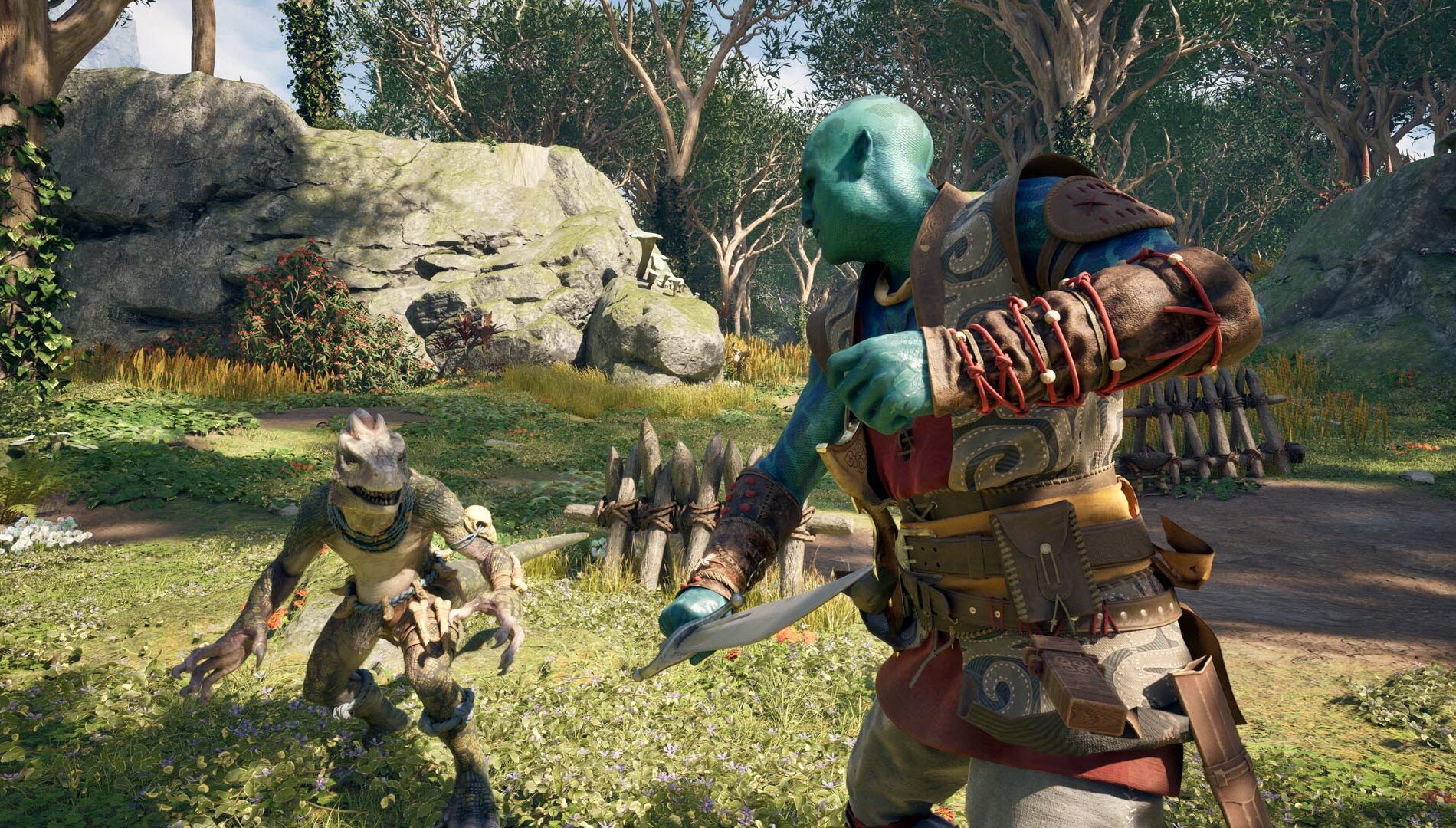
Obsidian has learned through iteration that sometimes these goals may be too hard to find for some players, so they would gradually layer in more hints, references, and suggestions. However, part of making choices feel personal for the player is feeling as though they’re opting into them – Obsidian doesn’t want players to feel like they’re being led around by the nose. It’s a balancing act achieved through playtesting, iteration, and careful attention.
“When it comes to consequences, if every choice and outcome is entirely predictable, it’s not necessarily rewarding because you miss that novelty,” says Game Director Carrie Patel. “But if things feel like they’re coming completely out of left field, it can be jarring. As the player, you are the protagonist of a story, and we want outcomes and consequences to feel earned. We hone this through a lot of iteration and internal testing to ensure we foreshadow choices, especially the big ones, and their consequences.”
Then there are the personal choices you can make that will have deep consequences for individual characters, or small groups of characters. “There are choices that will impact how your companions feel about you and whether they will stick around,” explains Ritger. “They will also react and respond to how you play side quests and main story quests — some of their quests are intrinsically tied to where the main story goes. They’ll respond to how you decide certain things in quests and give you their thoughts.”
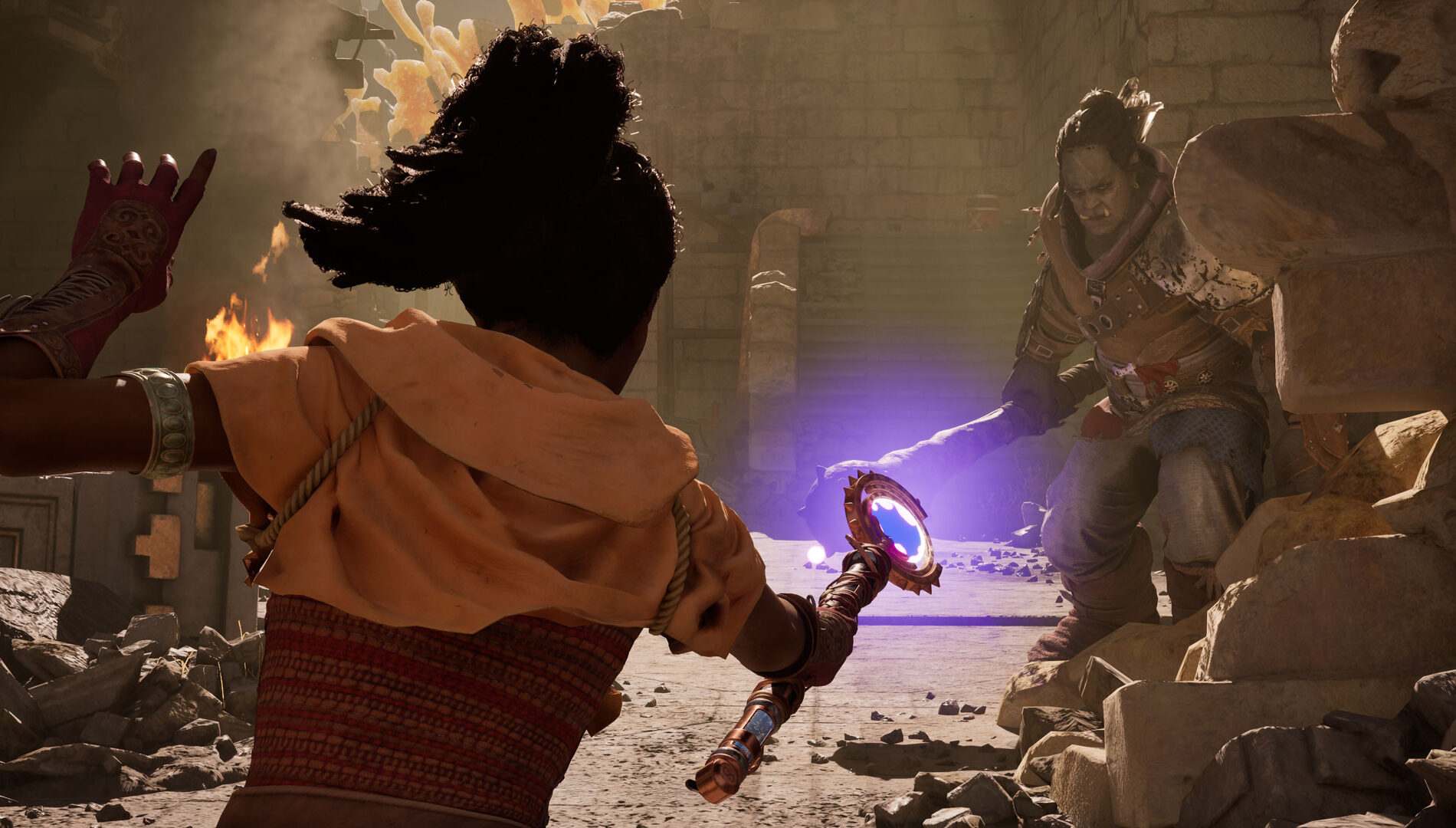
All four of the companions you encounter in Avowed are from the Living Lands, who you will encounter as the story progresses to build up your party. They have an interest in what happens and the choices you make, which is why they’re willing to tag along with you on your journey — to make sure you don’t make too much of a mess of things. So far, I’ve only played with Kai as a companion, a blue-skinned Aumaua, who often provided needed context about the Living Lands, commenting on locations, characters, creatures, and historical events during our time together. As a former soldier, he excels as a tank, soaking up damage, drawing enemy fire, and utilizing incendiary ammo. Learning more about the other companions and how they’ll interact with us is one of the things I’m looking forward to discovering when the game comes out.
As you might expect, the characters in Avowed (companions or no) are not simply archetypal heroes or villains; they are complex individuals occupying morally gray areas. This complexity means that, when you’re dealing with them, you’re afforded a variety of choices, ensuring that decisions are rarely as clear-cut as purely good or evil.
“The material reality of the people living in the setting informs the actual stories being told,” says Dollarhyde. “What does it look like when a colonial empire comes to your backwater island and says, ‘Hi, we’re here and this is ours?’ When we’re designing characters, quests, and content, we’re not looking at them and saying, ‘What type of character is this?’ or ‘What’s this person’s trope?’ It’s more about what they believe in. What they want, what influences what they want, and what they intend to do. It’s much more about belief and necessity.”
“For us, choice and consequence are not about every single thing you do affecting the heat death of the universe; it’s about everything being believably built to,” Patel adds. “It’s that variety in terms of the magnitude of your consequences and the time horizon on which you see those consequences. Finding ways to fulfill those consequences in ways that are believable but also surprising sometimes makes the experience feel fresh and encourages players to keep digging and see what they’re going to find.”
Helping to give players this level of choice is the way the world of Eora is designed within Avowed. Your adventures will take place in these large “defined zones” – not an open world – which lets Obsidian cook up a higher level of choice and consequence knowing where you may be at any point in the adventure, and being able to provide you highly detailed options within this zone.
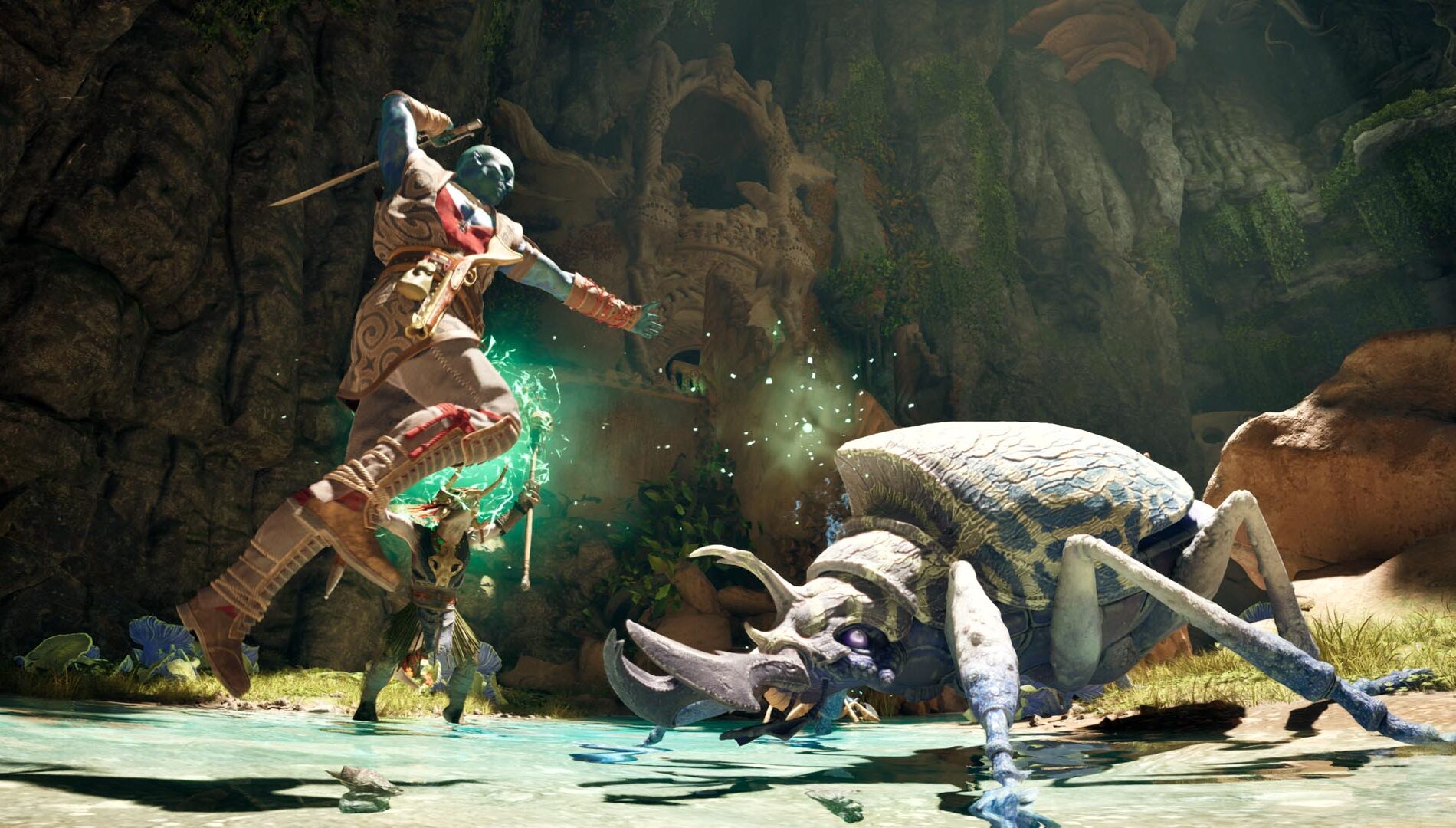
“I think it’s a good pacing mechanism (for those choices). We know roughly what you’ve done before you’ve gone to the next thing. It’s still a very open structure within those zones, where you can do whatever you want for the most part, but it’s not one contiguous area where you could be anywhere at any moment.” says Ritger.
Obsidian can build on those experiences over time and manage the pacing accordingly. It also allows them to stay focused as designers to ensure they’re delivering a coherent, thematically consistent story in each region by understanding the essence of each area. What are the stakes? Who are the main figures? What are their goals? What kinds of choices will be presented to you? The zones, in particular, help maintain this focus.
How detailed these zones look also seems to benefit from this approach, as what you get to explore feels much denser and more lived-in. It feels like many of the characters placed in the world have a tangible reason to be there, meaning none of their dialogue felt like filler. Every shrub, NPC, or house felt like it had a reason to be there.
“Pacing is really tough in open-world games,” adds Dollarhyde. “You never know where the player is and what they’re doing at any given time. So having these zones that happen in sequence means we always know what content you’ve just come from on the critical path. Maybe not what side quests you’ve done, but we always know you’ve just had this [core] experience.”
Designing choice to house this variety of outcomes is what brings me to one of the most fascinating aspects of what makes an Obsidian RPG like Avowed great — the sheer number of outcomes, choices, and consequences that you may never encounter. And the game design team is totally OK with that! It’s something I encountered during a separate hands-on preview last year.
In that instance, I was curious to see how far I could push a dialog interaction with the oracle, Sargamis. Without spoiling anything, the fact that it let me go as far down the rabbit hole as it did (effectively offering an opportunity to die in a very silly way)was both impressive and hilarious – and crucially, it didn’t need to be there. Obsidian rewarded me with more dialogue, more story, simply for being curious. I was eager to learn more about the logic behind this approach.
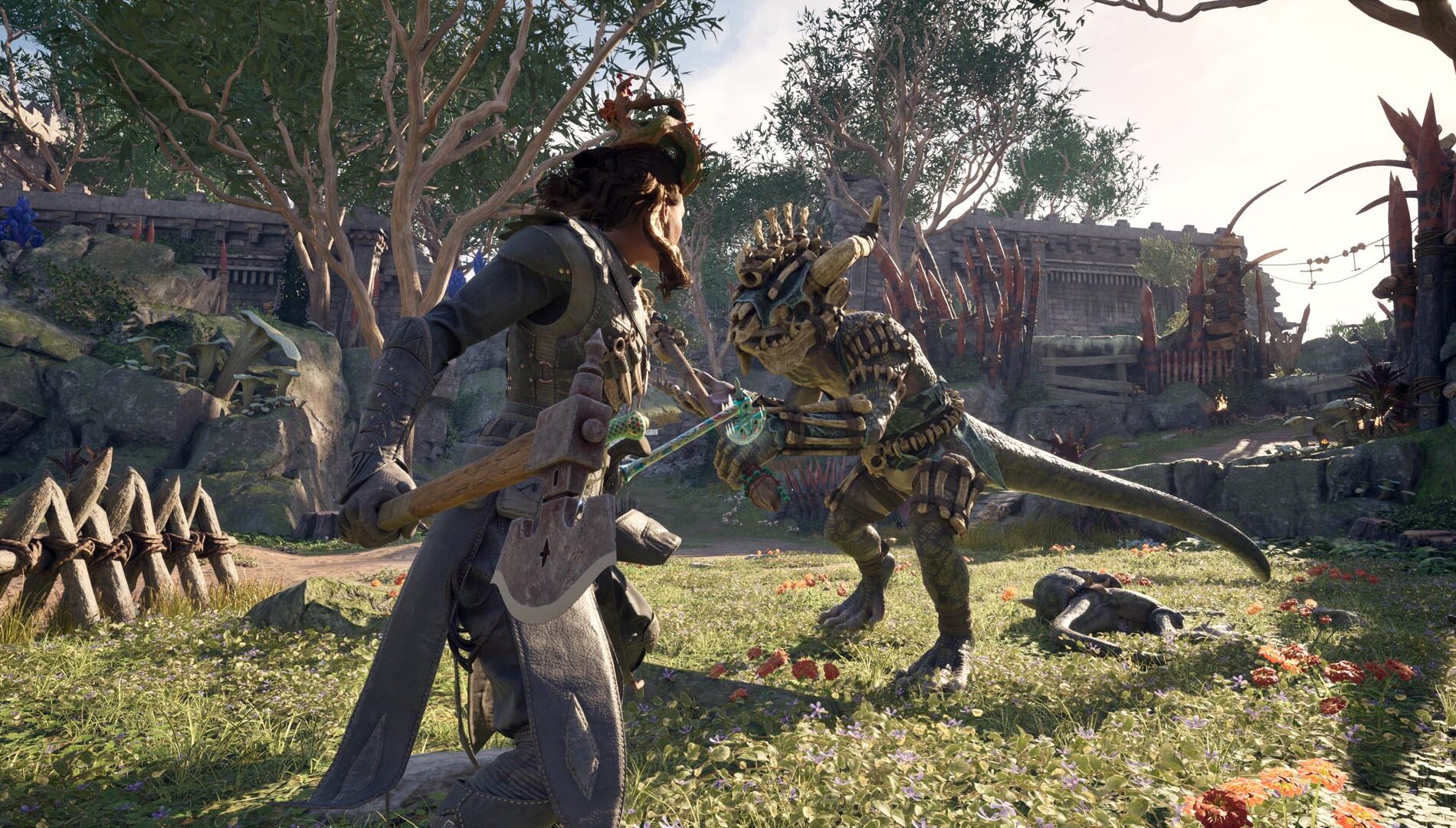
“We know that for the players who find those secrets and experiences, it’s going to give them that same sense of delight and surprise that it sounds like you experienced,” Patel says. “What makes RPGs special, and what makes our RPGs special, is the idea that we’re building a lot of content. We know that no one player is going to have the exact same experience, and part of what makes it fun and rewarding is when you find something and think, ‘I found this on my own, and I wonder how many other people did.’”
The team commits to these ideas as early as possible so that they have the time to really push those limits, and don’t feel tacked on. It’s an ingredient that they bake into how they build their games — they want to ensure there are core, impactful choices that will fundamentally alter the way Avowed plays.
“As a designer, I love making stuff that I know people won’t see, that a handful of players are going to encounter. I know that those handful of players, there’s going to be one or two in there that really love it and are astonished,” adds Dollarhyde. “Then they want to go tell somebody else about it, and they get to have a cool moment with their friend who played the game and missed that stuff. I love popping onto Reddit or the forums or whatever and just seeing what people are excited about because that’s the most fun part of making games.”
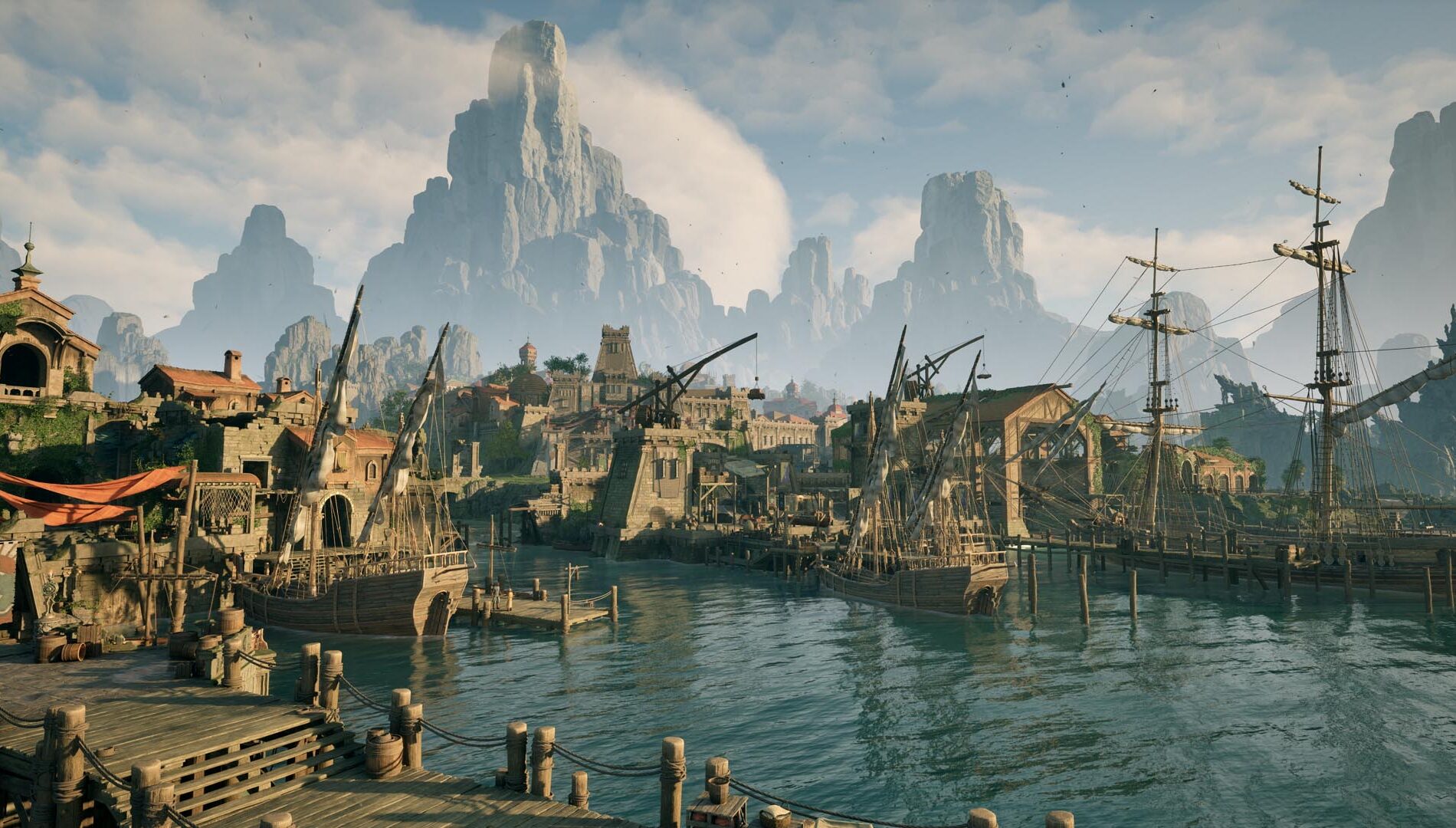
Obsidian’s objective is to explore a range of emotions, offering you the opportunity to engage deeply with different aspects of the game in whatever way you choose. Whether it involves extensive dialogue to learn more about the world, or participating in combat simply for the thrill, Avowed is structured so that you can always focus on your preferred activities, be it combat, exploration, or conversation in the Living Lands.
It all means that Avowed is shaping up to deliver one of the most deeply engaging and personalized gaming experiences this year, where your decisions will matter and each playthrough has the chance to be a truly unique experience. Obsidian’s meticulous attention to detail and the thoughtful combination of choice and consequence that defines this remarkable game, ensures your journey to Eora and the Living Lands will be a memorable one.
How Avowed Lets You Choose Your Own Adventure with Incredible Freedom - Xbox Wire

















